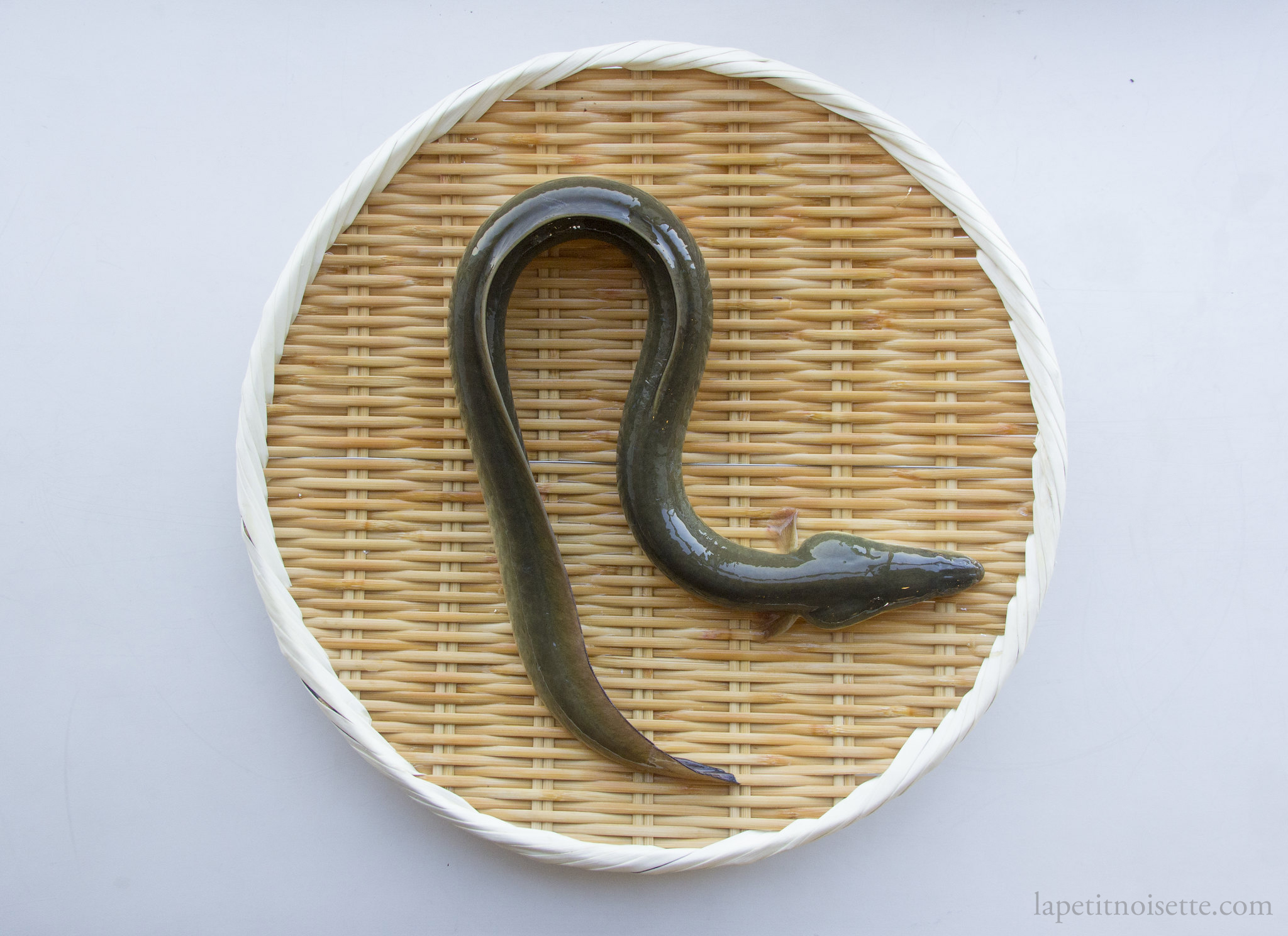*A commonly asked question by people on this site so I thought I’d give my take on this topic following my recipe on grilled eel.
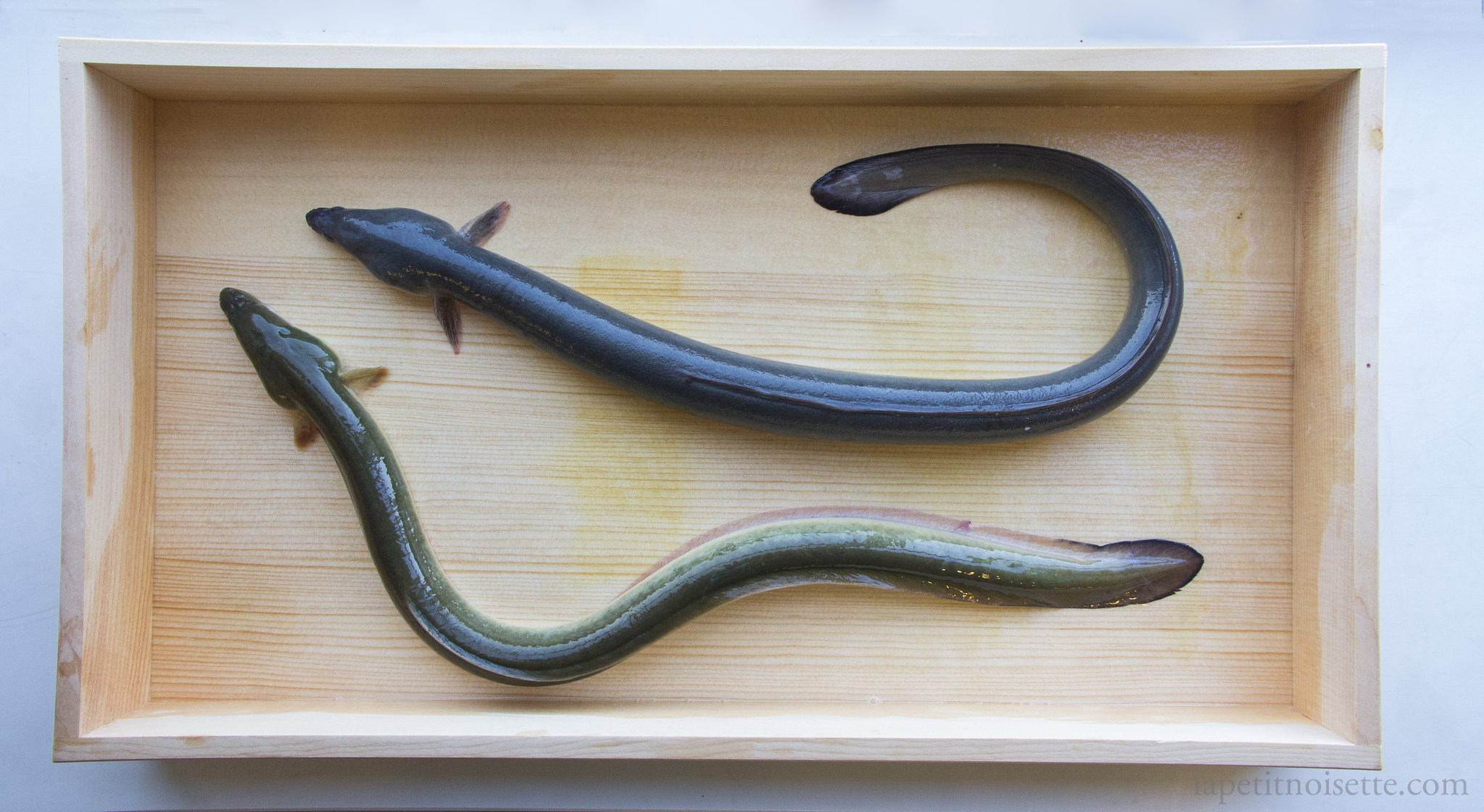
Whenever it comes to conversation with fishmongers, or even eel enthusiasts, a topic that always comes up is the superiority in taste of wild eel vs farmed eel, and how it’s getting rarer and rarer to find wild eel in Japan with ever skyrocketing prices. Here we’re going to look briefly at why wild eels in Japan are now so rare, before going into the differences between wild and farmed eels in terms of taste. We aren’t focusing so much on the decline of wild eel in Japan because this topic has already been covered extensively on the internet, but not talking about it is bad because it’s an important environmental issue that needs to be addressed.
Just like issues on whale hunting and declining bluefin tuna populations, Japan has a tendency to close their eyes to the possible extinction of the very food they love, only taking action once it is almost too late, and the same goes for Japanese freshwater eel, unagi.
Unlike bluefin tuna however, there is an aquaculture industry in Japan that farms these eels, but the problem lies in the fact that until very very recently, Japan did not have the technology to breed eels, and still relied on catching wild baby eels, known as glass eels, and then raising them in captivity. The demand for eel was so great that even now, these baby glass eels are imported from all over the world, including Taiwan, China and all over Southeast Asia. Due to this demand, the price of eating unagi in Japan, both wild and farm, has been gradually skyrocketing.
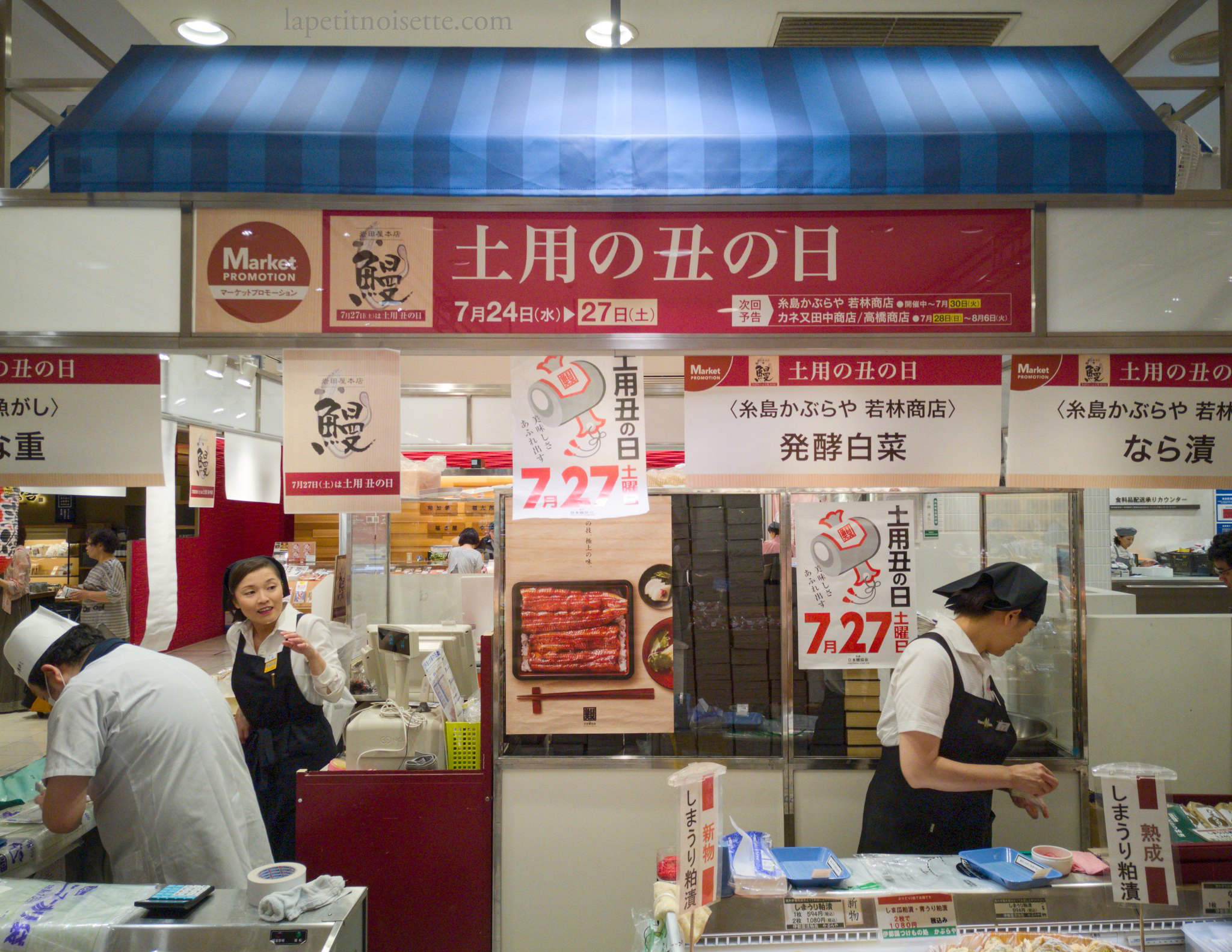
This isn’t help by the the Midsummer Day of the Ox (土用の丑の日), which falls on the 12th day before the start of autumn, which is when everyone in Japan eats unagi as the protein and vitamin rich Unagi was said to provide strength and energy to workers for the coming year. The thing is, the day of eating unagi was actually a marketing campaign devised by Hiraga Gennai, a doctor alive back in the 1700s. In the last number of years however, at least there has been a breakthrough in eel breeding technology which means that if the technology advances enough, we won’t have to rely on harvesting wild baby glass eels for aquaculture.
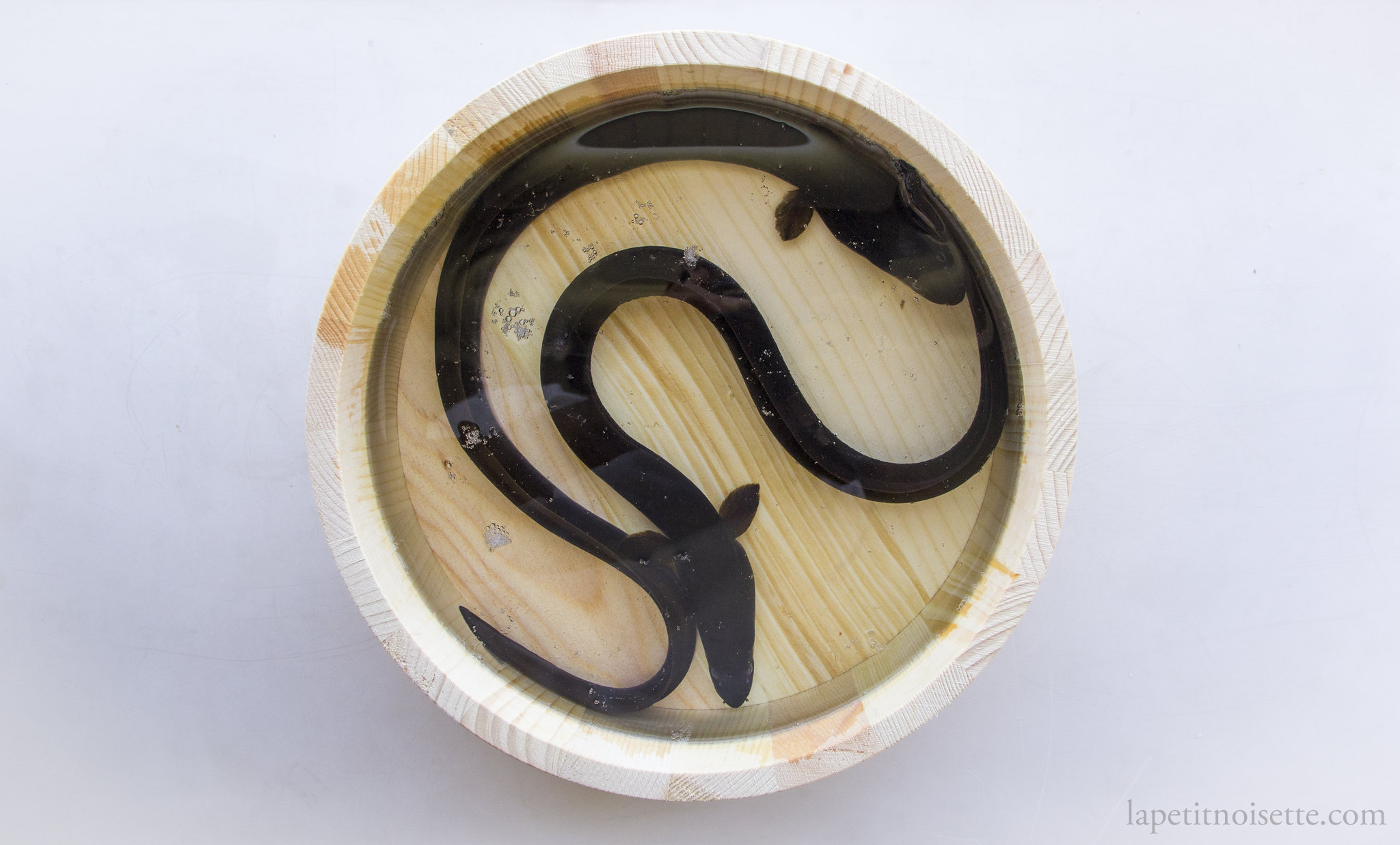
The season for wild eel vs farmed eel
There is actually a big misconception about the season at which Japanese eel is the best to be eaten. Because of the Midsummer Day of the Ox people have come to believe that summer is the best time to enjoy the flavour of eel, but this is not true. For wild eel, the best time to eat eel is actually in November to December in winter. Wild eels catching season starts around May in Japan when the eels actually come out of hibernation, and continues until December when they re-enter hibernation when the river temperatures go below 8°C. This means that the eel you can get in the summer has only had 2 or 3 months of time to eat and regain it’s meat and taste before they are caught. Beginning around October, the eels start to store their fat for hibernation and become delicious.
For farmed eel however, they are usually farmed at higher temperatures of around 25°C, and as a farmer, you have the choice of adjusting the amount of feed you provide them. This means that because the demand for eel increases during the summer, then farmers would want to have as many eels as possible ready to be shipped at that time, and thus will increase the feed just around the time to fatten them up. So the season for farmed eels is artificially made to be the summer, but for wild eels, their natural season is supposed to be during the winter.
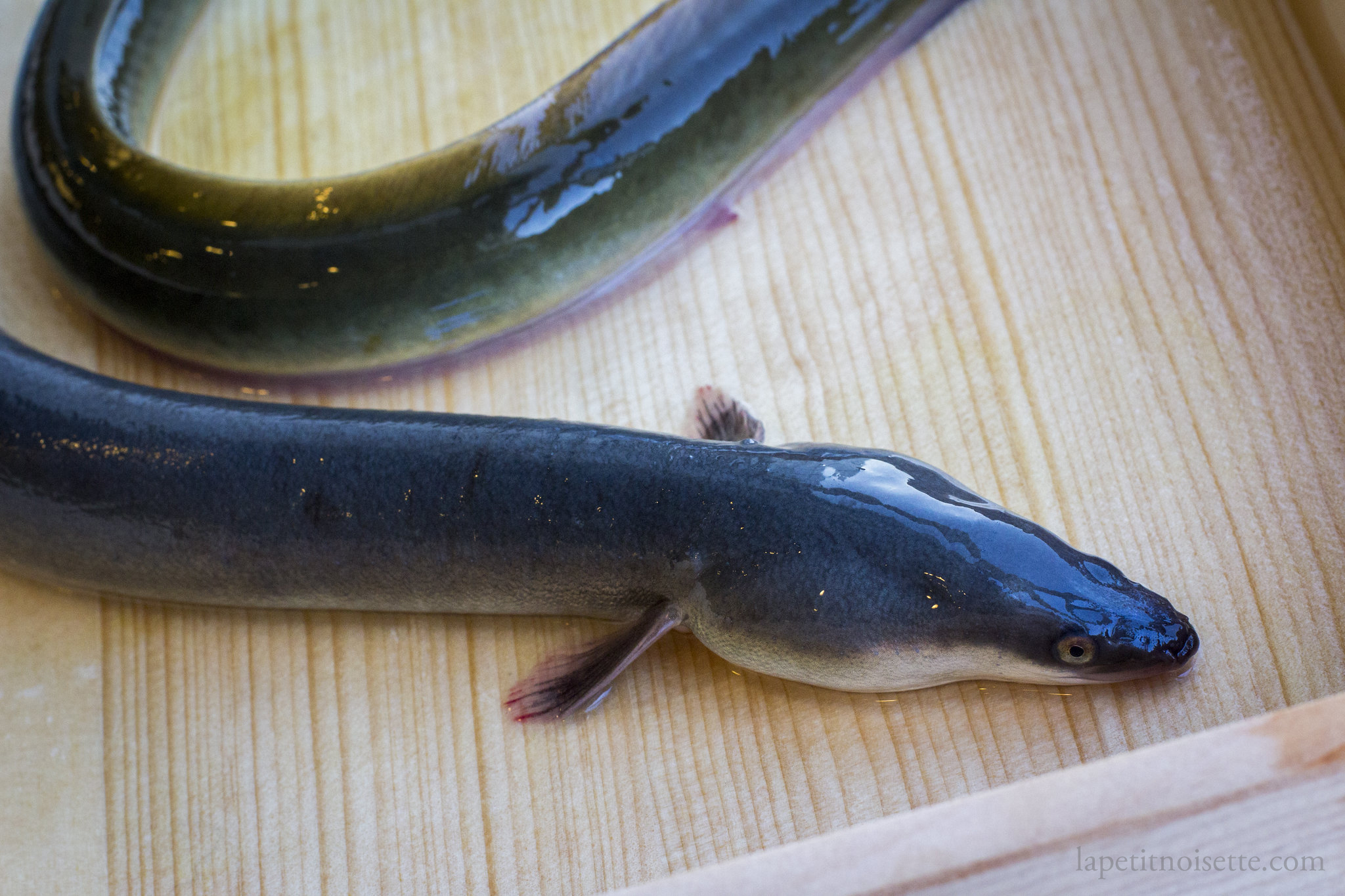
The appearance of wild eel vs farmed eel
In terms of appearance differences, the overall contrast and saturation of colour on wild eels tend to vary from river to river, but as a general guideline, wild eels have a yellowish underside that merges into a dark green back. However, when you look at the eels from top down especially from above water, these eels just look black. In farmed eels however, all the eels look pretty much the same, with a blue-ish tinge on the black and white underbelly, making them quite easy to distinguish.
Some people say that it is possible to distinguish the two based on the head size as well, with wild eels having a narrower and harder head as they burrow into the rocks to hide and look for food, whereas farmed eels would just typically eat blocks of fish feed as thus never use their heads to move rocks around.
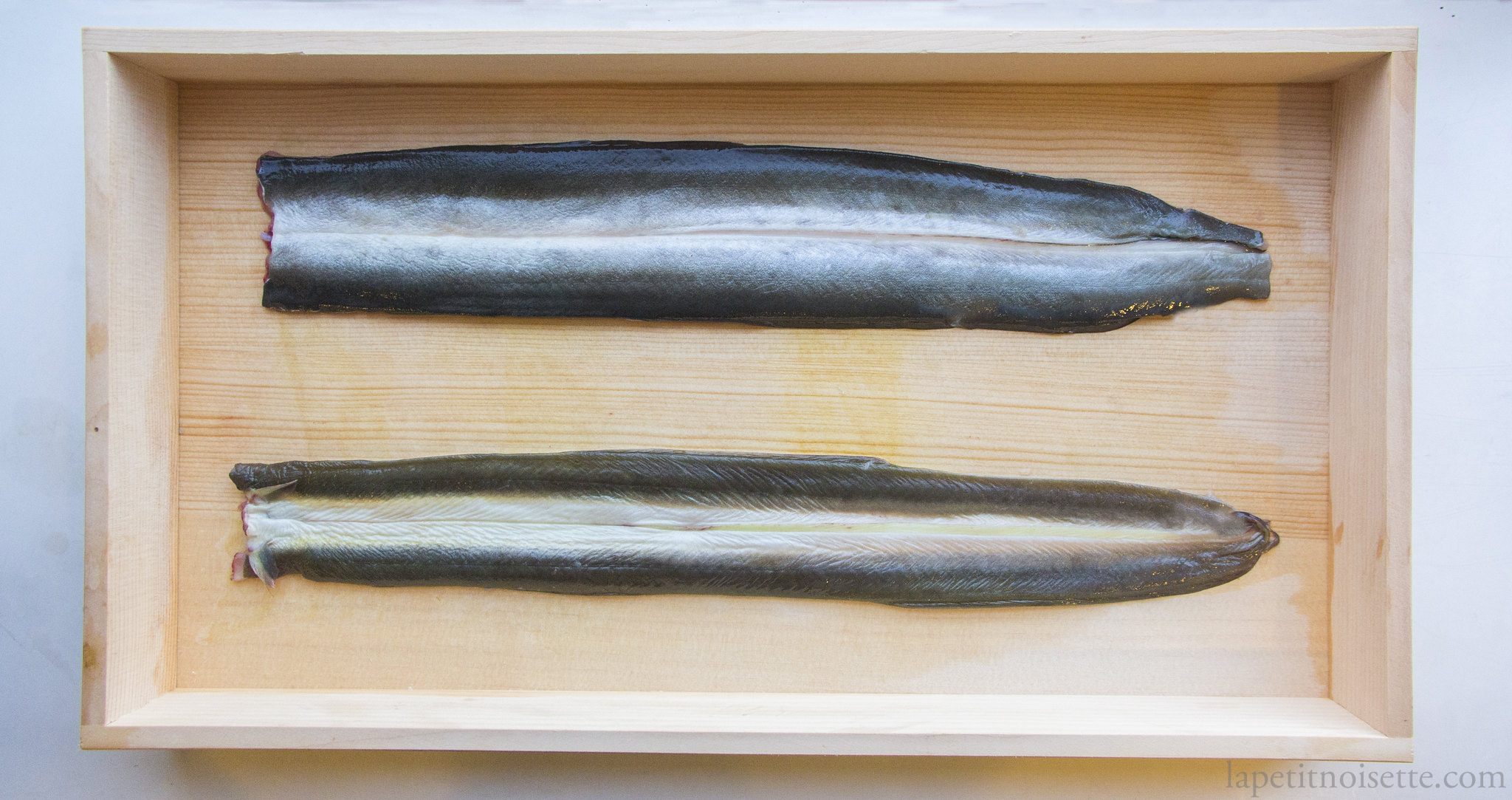
The taste of wild eel vs farmed eel
So is there a taste difference between the taste of wild eel vs farmed eel? The answer is yes and no. As with most other wild animals and fish that are eaten, wild eel has had a lot more exercised compared to its farmed counterpart, this means that it has more developed muscles which contribute to a stronger eel taste, which some Japanese call a refreshing scent of river fish (just like how sweetfish, ayu/鮎, is supposed to smell of cucumbers). Fat-wise wild eels are almost by default less fatty, but does less fat mean less flavour? Not really. A lot of the skill behind cooking eel is to balance the taste of feel with the fat of the eel, and the salty and sweet taste of the sauce, which is why there is a steaming step in between grilling the eel, which serves to get rid of excess fat. There is also the argument that fat on eels that have exercised is more well distributed and tastes better, whereas fat on farmed it is just oily and muddy in taste. A Japanese eel connoisseur will tell you that wild eel caught in the summer has a fresher taste, whilst that caught in the river is heartier and more earthy. During grilling itself, the small bones in wild eels are said to be softer, which means that they can just be eaten straight off the grill.
Skin texture wise there is a difference, but it is mainly after cooking that this difference comes through, because they’re covered in slime when they’re alive. The texture of grilled wild eel skin is just the right amount of crispy and crunchy with a layer of fat underneath, whilst for farmed eel, it can be rather oily and sometimes even chewy. In Japan, the term that is used to describe high quality eel is fuwafuwa (ふわふわ), which somewhat translate to light and airy, or even fluffy. Of course the meat of grilled eel isn’t fluffy, but it sort of points towards how very high quality wild eel has a soft meaty inside that is juicy when grilled, with a crisp skin on the outside.

All this being said, the river from which the wild eel is sourced from also plays a big role, as well as the age of the eel. I personally have tasted wild eel that had the same mediocre taste as farmed eel, and wild eel that completely blew me away. Japan is also a long country from north to south, which means that the amount of fat in the eel will vary as the water temperature in the river changes depending on location. The current consensus is that eels that are larger and older, who have left the lakes and returned to the rivers to swim back to the sea to spawn, but have not yet reached the sea are the tastiest. Rivers that are famous for unagi in Japan include:
- The Tone River (利根川) in the Kanto region.
- The Shimanto River (四万十川) also known as the last clear river in Japan (日本最後の清流)
- And the Kisogawa River (木曽川)
This list is of course by no means exhaustive, and there are many other famous rivers around Japan, and some in the Kyushu region that I don’t know of. There is a consensus I’m aware of however, that Hokkaido and Okinawa do not produce freshwater eel.
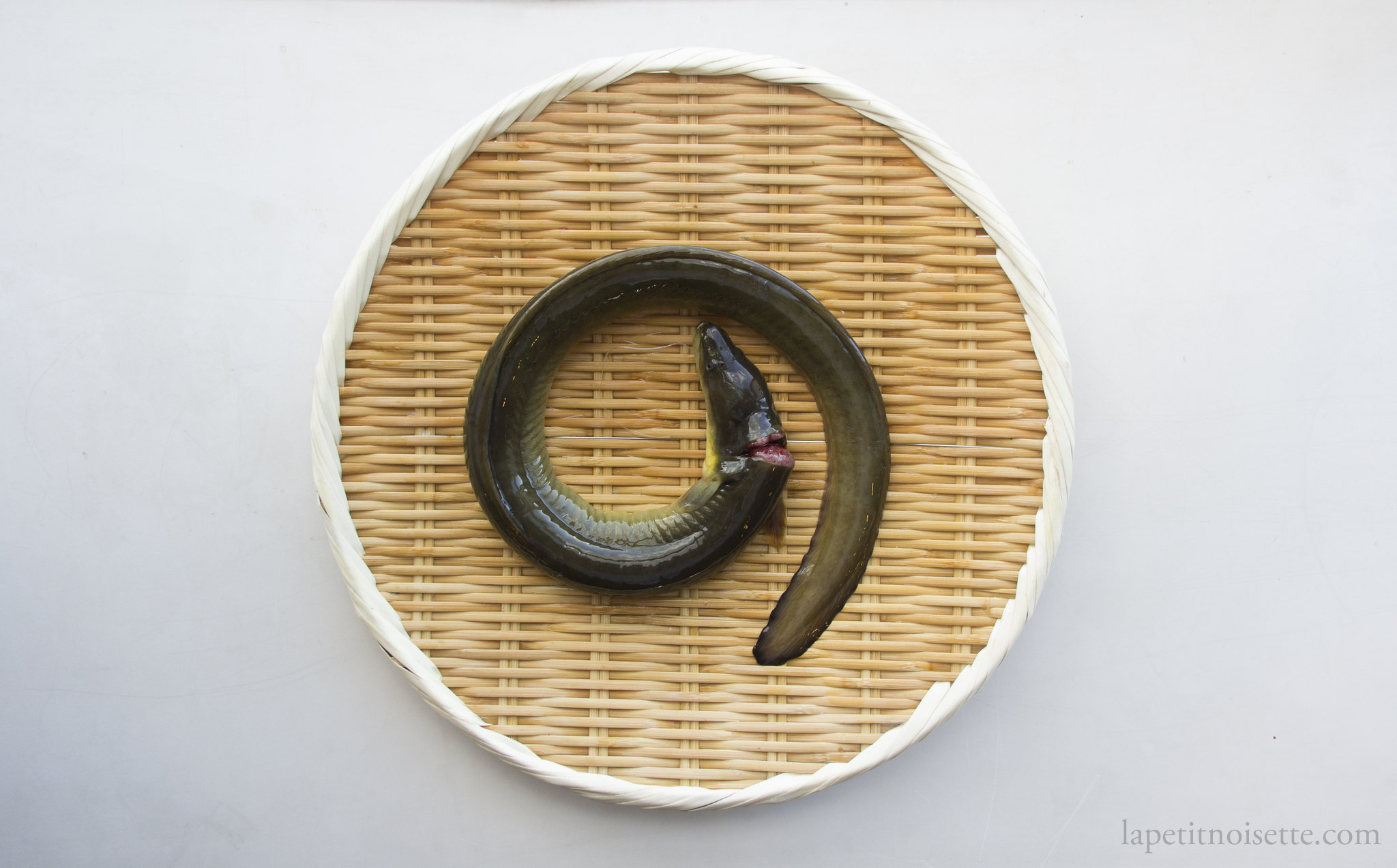
Over the years, the quality of farmed eel has actually been improving by leaps and bounds certain farmers try to make their farmed product taste just like the wild one. This is because many of the high end unagi establishments in Japan can no longer afford or obtain enough wild eels for their customers, and in turn have formed partnerships with farmers to produce better quality farmed eel by trying to mimic the eel’s natural environments. This is done by controlling the feed given to the eels, and even storing the eels in barrels which are placed in ice-cold streams during the winter months to facilitate hibernation. This process is repeated over several seasonal cycles before the eels are harvested. The following “brands” of farmed eels are used by famous eel restaurants around Japan.
- Bandotaro/坂東太郎 in Chiba Prefecture
- Kyosui/大井川共水 in Shizuoka Prefecture
- And Herb/ハーブ in Miyazaki Prefecture (I know this sounds like the name of a weed company).
If you look at the website or inhouse menu of many of Japan’s well known unagi establishments, you’ll often see these brand names appear though many of them still stock wild eel whenever possible. It is actually even possible to call in advance to ask the restaurant to reserve wild eel for you depending on the day’s stock.
From my experience, the taste of farmed eel isn’t bad, it’s still very very good, it’s just not mind blowing. The differences would be the more muddy taste of farmed eel and it’s oily texture that isn’t balanced. It still is a delicious and hearty well nonetheless.
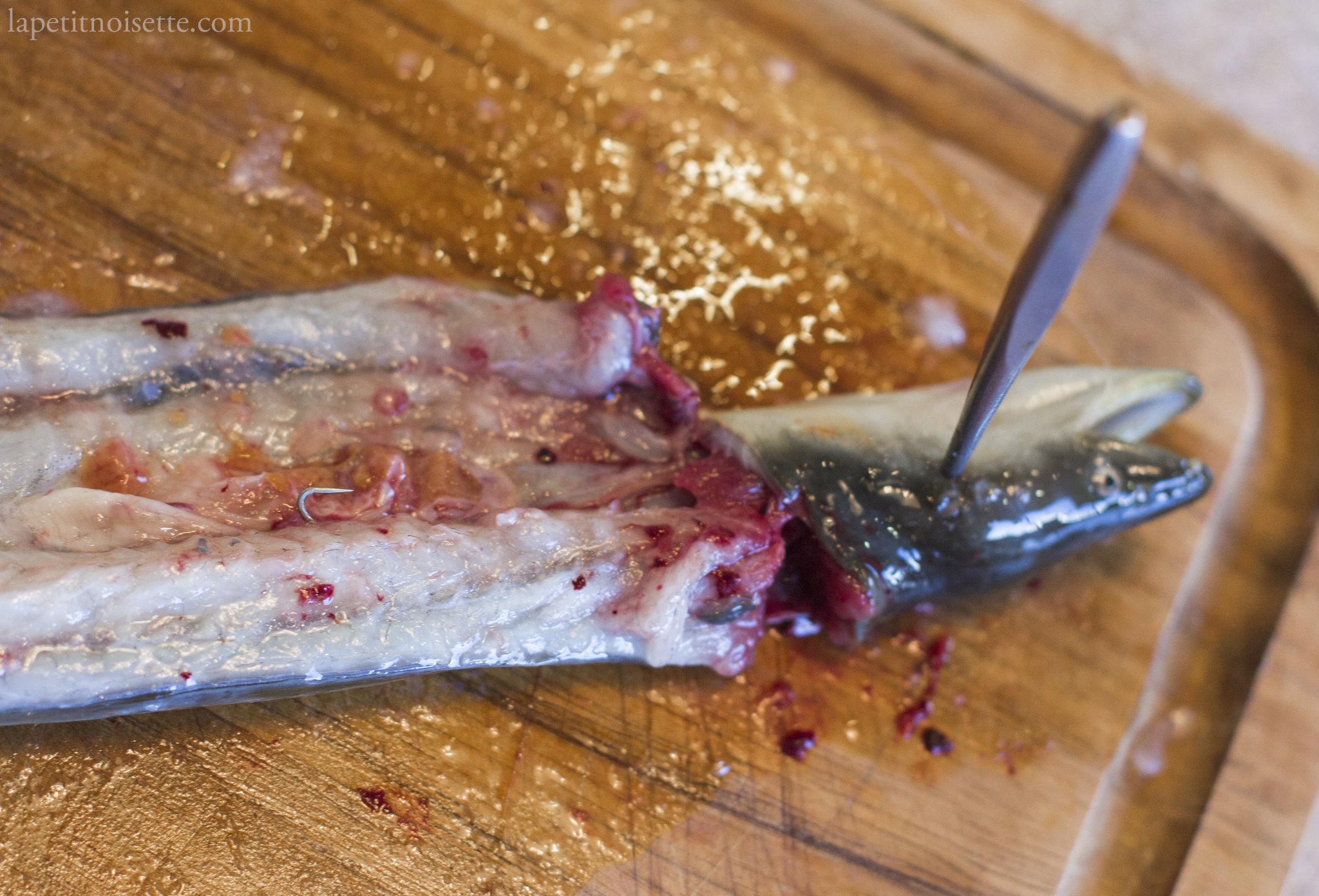
The taste of wild eel vs farmed eel offal
The last part of course, is the offal. When gutting eels, the offal is never wasted, with the liver typically being served as a side in soup, and the remaining offal sometimes being skewered and grilled with the same sweet sauce. The taste of offal in wild eels vs farmed eels probably has the biggest difference, just like how eating wild mallard liver is so much gamier and darker red in colour compared to eating chicken liver. In the picture below, you can see two wild eel livers vs one farmed eel liver on the left, which is pretty obvious from its larger, more uniform size and lighter colour. As with most offal, the wild eel’s offal has a much stronger taste and depth of flavor which some might describe as more iron like. Whether or not this is a good thing depends on your personal preference of offal to begin with however. Those who appreciate the gamey taste of poultry offal will most like prefer the taste of wild eel offal.

Conclusion
So all in all, not all wild eel is superior to that of farmed eel, and the typical “wild eel” that you would see in a Japanese supermarket is either imported from a different country or just doesn’t taste good. I do recommend you try real proper wild eel once in your life as it is a completely different experience, but your best bet for being able to try it is to fork over quite some money. If the price on offer is too good to be true, it probably isn’t going to be really good. Don’t forget that the skill of cooking the eel matters too. The most reliable place to try well cooked wild eel would be at any well known establishment from tabelog or the michelin guide, and if they don’t have wild eel, most of them now source very high quality farmed eel so there’s nothing to be worried about.
